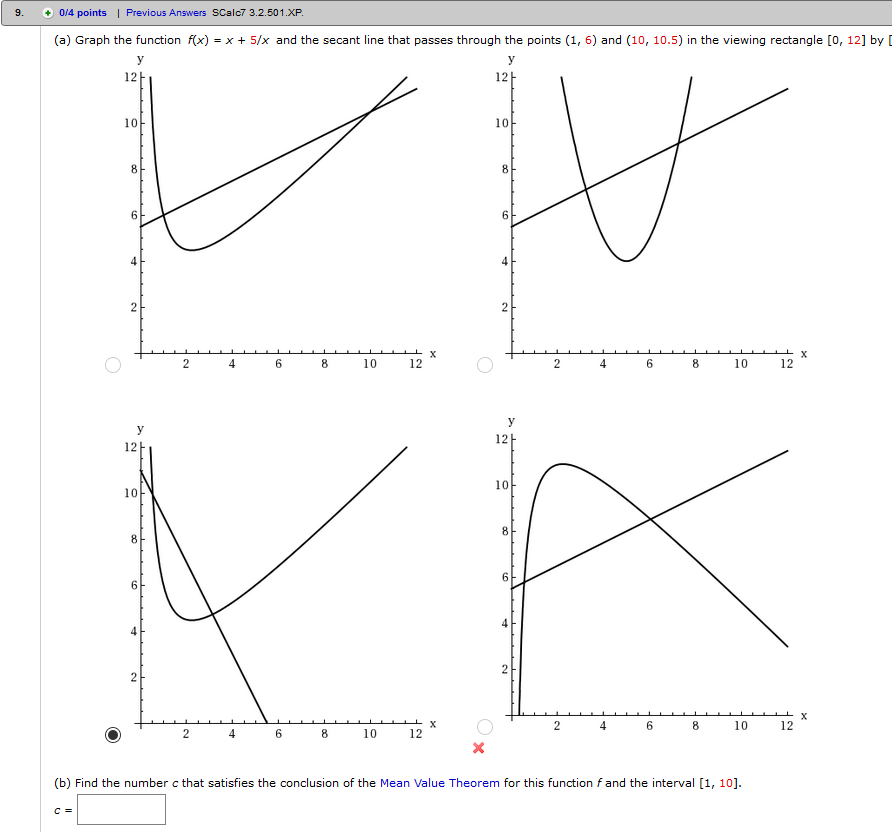
Solved Graph the function f(x) = x + 5/x and the secant line
f'(x) = u'(x) + v'(x) Now, differentiating the given function, we get; f'(x) = d/dx(x + x 3) f'(x) = d/dx(x) + d/dx(x 3) f'(x) = 1 + 3x 2. Example 2: Find the derivative of the function f(x) = 6x 2 - 4x. Solution: Given function is: f(x) = 6x 2 - 4x. This is of the form f(x) = u(x) - v(x) So by applying the difference rule of.
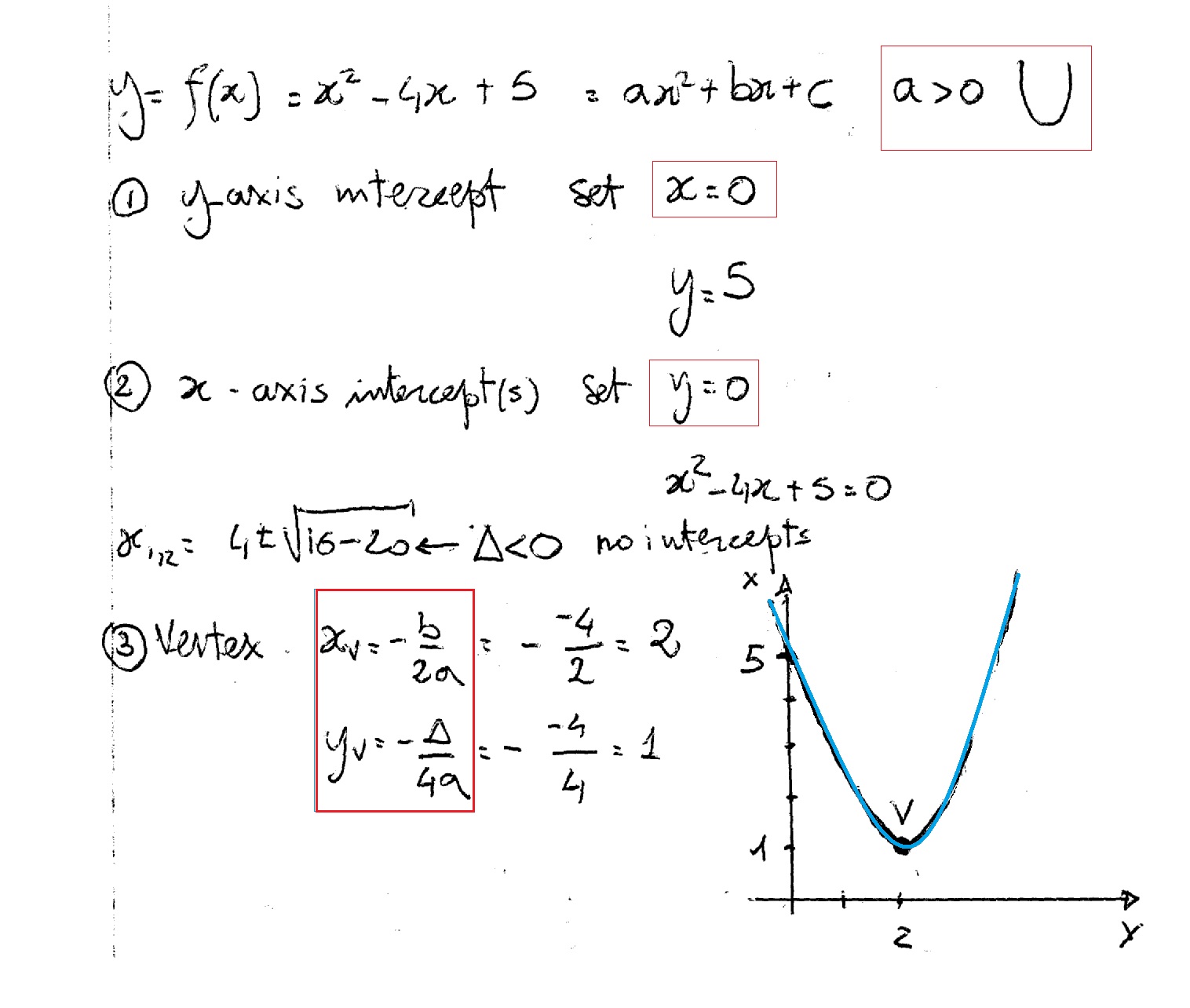
How do you graph f(x) = x^24x + 5? Socratic
We say "f of x equals x squared" what goes into the function is put inside parentheses () after the name of the function: So f (x) shows us the function is called " f ", and " x " goes in And we usually see what a function does with the input: f (x) = x2 shows us that function " f " takes " x " and squares it. Example: with f (x) = x2:

The function, "f" is defined by the following rule. f(x)=x5 Complete
( 14 votes) Upvote Flag Puspita 4 years ago i keep getting confused with positive/ negative and increasing/ decreasing. i dont get when to use which method? • ( 5 votes)

f(x) ☆ F(x) Wallpaper (35120236) Fanpop
Here is Great Educational Songs & Animations for kids, toddlers, children, babies and EVERYONE!Learn English Alphabet, Phonics with words.Please enjoy watchi.
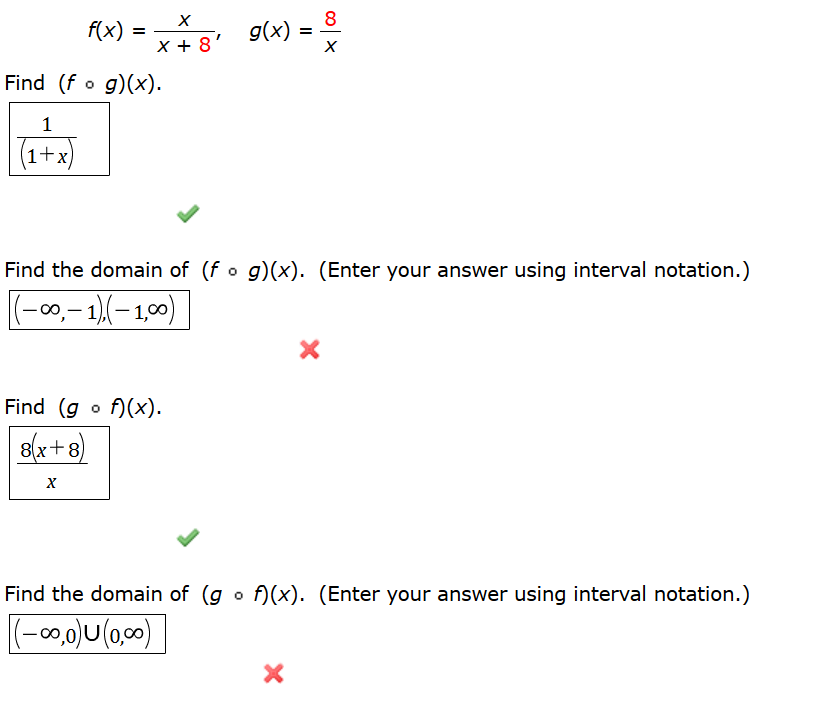
Solved Consider the following functions. f(x) = x / x + 5,
Theorem 6.2.2. If X is any random variable and c is any constant, then V(cX) = c2V(X) and V(X + c) = V(X) . Proof. We turn now to some general properties of the variance. Recall that if X and Y are any two random variables, E(X + Y) = E(X) + E(Y). This is not always true for the case of the variance.

Solved The graph of f(x) is shown (see figure). 8x f(x) = V
lf c is any real number and if f(x) = c for all x, then f ' (x) = 0 for all x . That is, the derivative of a constant function is the zero function. It is easy to see this geometrically. Referring to Figure 1, we see that the graph of the constant function f(x) = c is a horizontal line. Since a horizontal line has slope 0, and the line is its.
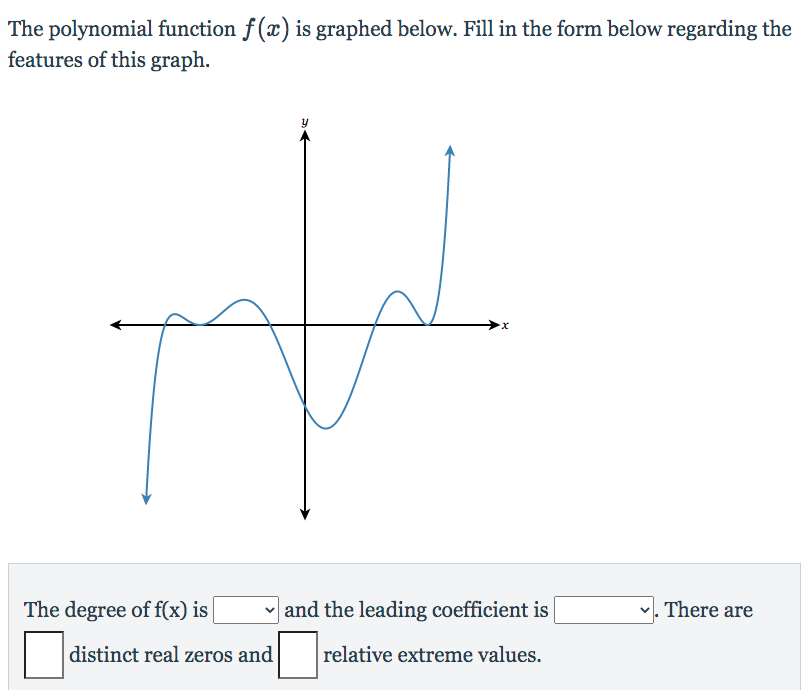
Answered The polynomial function f (x) is… bartleby
Using implicit differentiation Using chain rule Quotient Rule Formula Proof Using Derivative and Limit Properties To prove quotient rule formula using the definition of derivative or limits, let the function f (x) = u (x)/v (x). ⇒ f' (x) = lim h → 0 [f (x + h) - f (x)]/h = lim h → 0 u ( x + h) v ( x + h) − u ( x) v ( x) h

Graph of f(x), f'(x), and f''(x) (Calculus)
What is f(x)? It is a different way of writing "y" in equations, but it's much more useful!

Integral of f '(x)/f(x) Very Common Integral Calculus YouTube
The SEC v Ripple case saw an increase in activity on Thursday as the SEC and Ripple progress through remedies-related discovery. On Thursday, XRP gained 0.18%. Following a 6.03% rally on Wednesday.

What is the range of the function f (x) = (x + 5) (x + 1)
Anuvesh Kumar. 1. If that something is just an expression you can write d (expression)/dx. so if expression is x^2 then it's derivative is represented as d (x^2)/dx. 2. If we decide to use the functional notation, viz. f (x) then derivative is represented as d f (x)/dx.
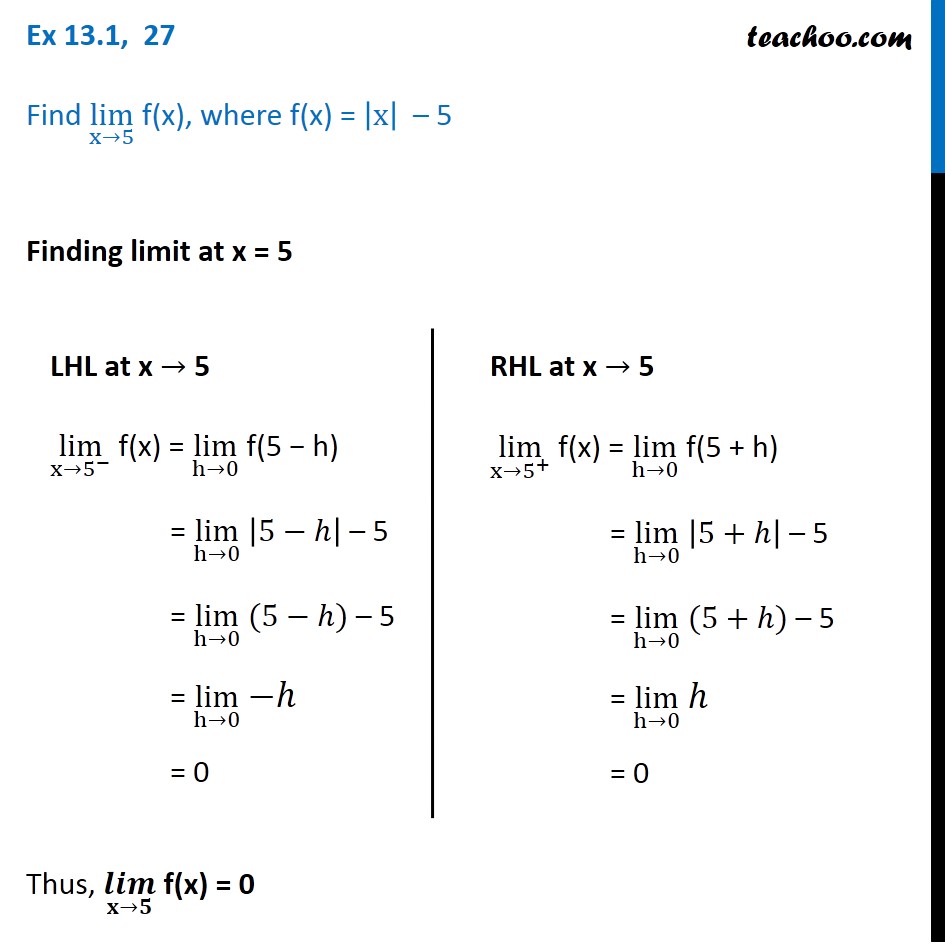
Ex 12.1, 27 Find lim x>5 f(x) where f(x) = x 5 Teachoo
Roman numerals to numbers conversion calculator and how to convert.
SOLUTION what is a domain of f(x)=52x
Using the formulas from above, we can start with x=4: f (4) = 2×4+3 = 11 We can then use the inverse on the 11: f-1(11) = (11-3)/2 = 4 And we magically get 4 back again! We can write that in one line: f-1( f (4) ) = 4 "f inverse of f of 4 equals 4" So applying a function f and then its inverse f-1 gives us the original value back again:

Answered The graph below is the function f(x) 5… bartleby
1. Yes. In mathematics it is more common to use a single letter (sometimes a Greek letter), but a function name can be anything. After all it's just a way to communicate to other humans what you're talking about, changing a name doesn't change the math. 2. Yes. A simple example is f (x,y) = x * y. 3. Yes.

Given the graph of the function `y=f(x)`, draw the graph of `y ="sgn"(x
f(x) vs f(-x) and -f(x) Save Copy. Log InorSign Up. A graph of f(x) along with the points at which it crosses the x and y axes is shown on the axes. 1. f(x) 2. Plot the graph of f(-x) and the points at where it crosses the x and y axes by clicking on the circle below..

Composite Function Example 3 SPM Additional Mathematics
comparing graphs of f and it's first and second derivatives. Increasing/decreasing intervals, concavity, max/min
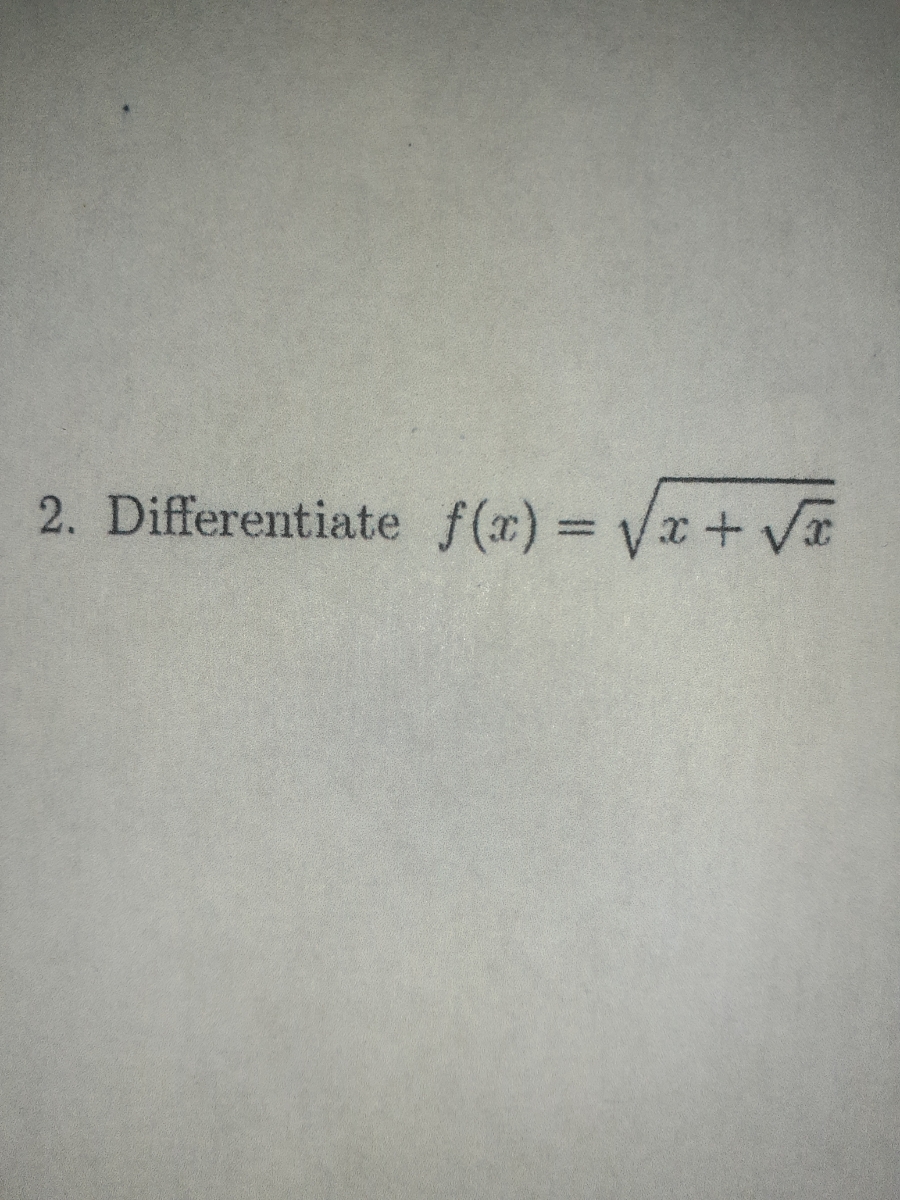
Answered Differentiate f (x) = V x+ V 3D bartleby
This pattern works with functions of more than two variables as well, as we see later in this section. Example 14.5.1: Using the Chain Rule. Calculate dz / dt for each of the following functions: z = f(x, y) = 4x2 + 3y2, x = x(t) = sint, y = y(t) = cost. z = f(x, y) = √x2 − y2, x = x(t) = e2t, y = y(t) = e − t.